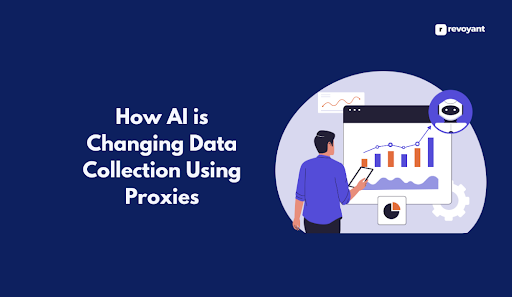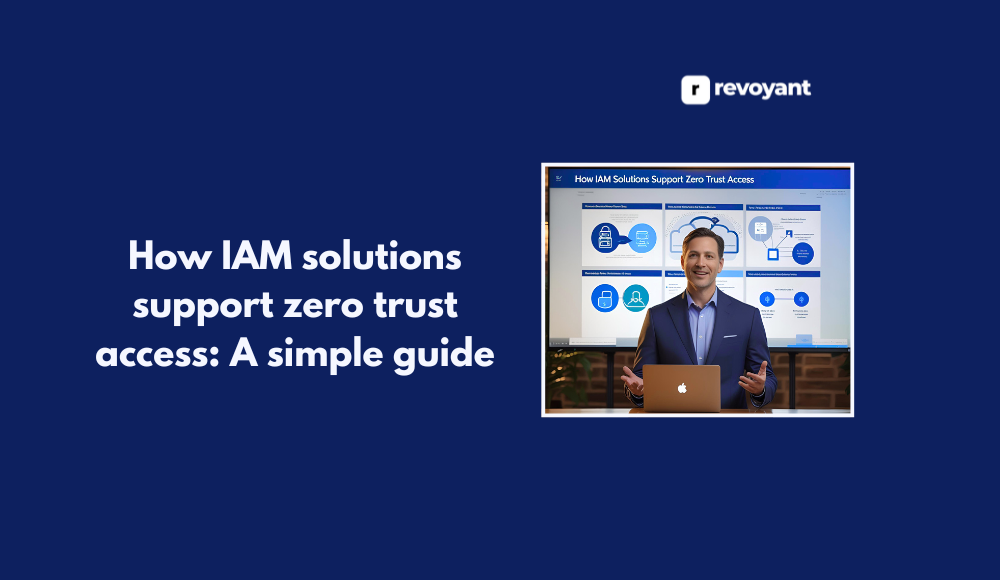Sometimes, connecting different AI tools and apps feels confusing and slow. Many people face the same challenge, but after learning about the Model Context Protocol, or MCP, things can get much easier.
MCP is an open standard that helps these connections work more smoothly. In this post, you will learn how to understand MCP in just 20 minutes with simple steps and real examples. Stick around to see how you can connect your favorite AI tools quickly!
Key Takeaways
- MCP helps AI tools talk to each other smoothly.
- You can build an MCP server in Python using simple steps.
- Testing the server makes sure it works with AI like Claude Desktop.
- Adding prompts and tools to your server expands what it can do.
- Integrating the server with apps lets you manage tasks quickly.
What is MCP?
MCP stands for Model Context Protocol. It sets clear rules for how AI systems talk to each other, and connect with outside data sources, making everything work smoothly.
Definition and Origin
The Model Context Protocol, or MCP, is a standard way to connect tools and context with AI applications. I use it to link machine learning systems, automation features, and data analysis into one framework.
This protocol helps make programming integration easier for developers working in software development or artificial intelligence.
Anthropic created MCP as a solution for smooth technology connections. They saw the need for reliable communication between AI systems and external tools in 2023. Now, I rely on this method to boost efficiency in many projects that depend on contextual connection and modern technology needs.
Analogy and Benefits
I see Model Context Protocol, or MCP, working like a USB-C port for AI applications. With a USB-C port on my laptop, I can plug in many devices and they just work together. In the same way, MCP lets me connect different external apps like Slack or Google Drive to my AI tools with ease.
This gives me universal connectivity across many platforms.
MCP also means I can use one set of tools with any IDE I choose. For example, if I switch from Visual Studio Code to JetBrains PyCharm, my toolset still works without changes. Since MCP is part of an open-source community as of 2024, creating an MCP client gives developers access to thousands of public MCP servers out there.
This boosts integration capabilities and supports fast custom integrations for things like contextual actions in AI software projects.
How MCP Works
MCP sets up clear rules for how AI systems talk to each other and share data, making sure every part knows what to expect. By following this protocol, I can connect language models with tools, apps, or outside sources in a simple way that keeps communication smooth and safe.
Architecture and Mechanism
MCP uses a client-server architecture. Clients send requests to the server for things like tool availability or resource allocation. The server checks its capabilities and answers with what it can provide, such as a special tool for email drafting or information about available resources.
This request-response mechanism keeps communication clear and fast.
I see this setup work well in many use cases, including client interaction and service provision tasks. Servers handle each incoming message using simple rules, which helps keep the system stable even during busy times.
Next, I will explain the key components that make MCP work so smoothly.
Key Components
I see the MCP uses a client-server architecture. The MCP client acts like a customer in a coffee shop, sending requests. On the other hand, the server responds just like a barista would.
Claude Desktop is one example that includes this kind of MCP client setup.
The whole model uses a clear communication protocol and follows a request-response model. Clients can connect to more than one MCP server at once, which helps with remote access and management tasks.
Secure data transmission relies on network connectivity and safe APIs, so I protect my connections carefully. Server management tools let me monitor who connects or interacts with each MCP server during daily operations.
Implementing an MCP Server in Python
Building an MCP Server in Python lets me link AI tools with outside data, fast and easy. I can use simple code to create new ways for my assistant to talk with other systems or data sources.
Using Anthropics official Python SDK
To start the server, I import the fast MCP class from Anthropics official Python SDK. With one line of code, I can create a new MCP server and name it AVA. This step sets up fast communication for my AI application using a proven protocol.
Using this official software development kit in Python, I follow best practices for secure and reliable connections.
After setting up the base server, adding prompts, resources, and tools makes interaction easy.
Adding Prompts, Resources, and Tools
After setting up the basics with Anthropics official Python SDK, I moved on to add prompts, resources, and tools. Using the `mcp.prompt` decorator, I marked my functions as prompts.
This tells the MCP server which actions should trigger AI responses.
For resources needed by these functions, I applied the `mcp.resource` decorator. Tools were next; importing key libraries and using the `mcp.tool` decorator made it simple to expand what my server could do.
For example, one tool let me write email drafts right into a Gmail account from an AI application. These steps brought flexibility and power to my MCP server without adding much code or confusion.
Setting up the Transport Mechanism
I set up the transport mechanism using standard input and output, or IO, since this method works best for local development. I configure the Python script to read messages from standard input and write responses through standard output.
This creates a simple way to establish server communication without extra tools or network layers.
To make everything run smoothly, I always include the `.run` method at the end of my script. This step activates the whole process and keeps things organized. By following these steps, I develop a basic yet reliable system to handle requests between clients and the MCP server using just Python’s built-in functions.
Testing the MCP Server
To test the MCP server, I start by running the server using the UV run command. Next, I use the MCPD dev command to begin server execution. Node must be installed before starting, or errors will appear.
During testing, I can see all created resources, prompts, and tools displayed on my terminal screen. This lets me check if the Python server implementation works as expected. If something is missing from my list of resources or prompts, then I know where to look in my setup.
Server testing helps make sure that every part, like added tools and transport mechanisms, works without error. By checking each feature this way during development with these commands and supporting tools such as Node, I catch problems early in my process.
After confirming everything runs well here in testing mode for Python server development under MCP standards, integration with AI applications like Claude Desktop becomes possible next.
Integrating an MCP Server with AI Applications
Connecting an MCP server with AI applications helps me set up smart, secure links between language models and useful data tools—keep reading to see how I make it work step by step.
Introduction to Claude Desktop
Claude Desktop brings AI right to my computer. I use it for local server setup and desktop integration with MCP servers. This tool makes application integration easy for many Artificial Intelligence applications.
Installation needs a few requirements, such as enough memory, disk space, and a supported operating system like Windows or MacOS. Server integration works best when all system requirements match the official guidance from Anthropic.
Doing so helps me join Claude Desktop with different AI software solutions without issues.
Detailed Integration Steps
I open Claude Desktop and go straight to settings. In there, I find the developer section and click on it. Next, I search for the configuration JSON file because this is where changes happen.
To integrate my MCP server with AI applications, I must set the configuration right.
Inside that JSON file, I add or update the path so it points to the full location of my UV installation on my computer. Typing out the entire file path makes sure nothing goes wrong during connection.
After editing, I save all changes in that JSON file. Before testing if everything works together, I quit Claude Desktop completely and then relaunch it fresh.
Now comes testing the integration step which helps see if everything links up as planned.
Testing the Integration
I typed a prompt into Claude Desktop. My task was clear, I needed to draft an email to Sarah Chen using the desktop interface. After entering the request, I saw the MCP server connect with my Gmail account without delay.
The artificial intelligence handled everything fast; it created and saved a draft message straight in my Gmail drafts folder.
This process showed how easy application integration can be with AI tools like Claude Desktop. All steps worked as planned—from user interface input to real-time task execution inside Gmail.
Now, I am ready to walk through detailed integration steps for even smoother email management between platforms.
Conclusion
The Model Context Protocol makes it much easier to connect AI with tools and real data. I now see how clear steps help me set up and test the MCP server in Python. Building these connections means my AI can do more, like writing emails or pulling info from Google Drive, all while keeping everything simple and safe.
Learning MCP basics only took a short time but gave me skills that will last far longer.
FAQs
1. What is the Model Context Protocol?
The Model Context Protocol is a system or method used to understand and interpret data models in a specific context.
2. Can I learn about the Model Context Protocol in just 20 minutes?
Absolutely, with focused study and clear resources, you can get a basic understanding of the Model Context Protocol in just 20 minutes.
3. Why should I learn about the Model Context Protocol?
Learning about the Model Context Protocol will help you better comprehend how data models work within their given contexts; this knowledge can be beneficial for many roles, especially those dealing with large amounts of data.
4. Are there any easy ways to understand the Model Context Protocol quickly?
Yes, breaking down complex concepts into simpler terms and using practical examples are effective strategies for quickly understanding something like the model context protocol.




